
How to Use Seeeduino XIAO: Examples, Pinouts, and Specs
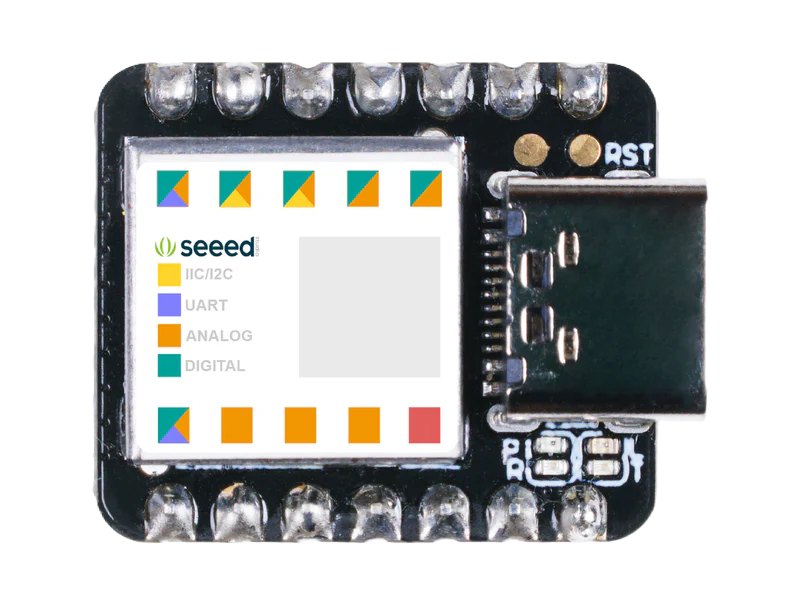
 Design with Seeeduino XIAO in Cirkit Designer
Design with Seeeduino XIAO in Cirkit DesignerIntroduction
The Seeeduino XIAO is a compact and powerful microcontroller board based on the Microchip SAMD21 Arm Cortex-M0+ processor. Manufactured by Seeed Technology Co., Ltd, it is an Arduino-compatible development board that is particularly suitable for projects with space constraints that still require high performance and low power consumption. Its small size and extensive features make it ideal for wearable devices, rapid prototyping, and IoT projects.
Explore Projects Built with Seeeduino XIAO
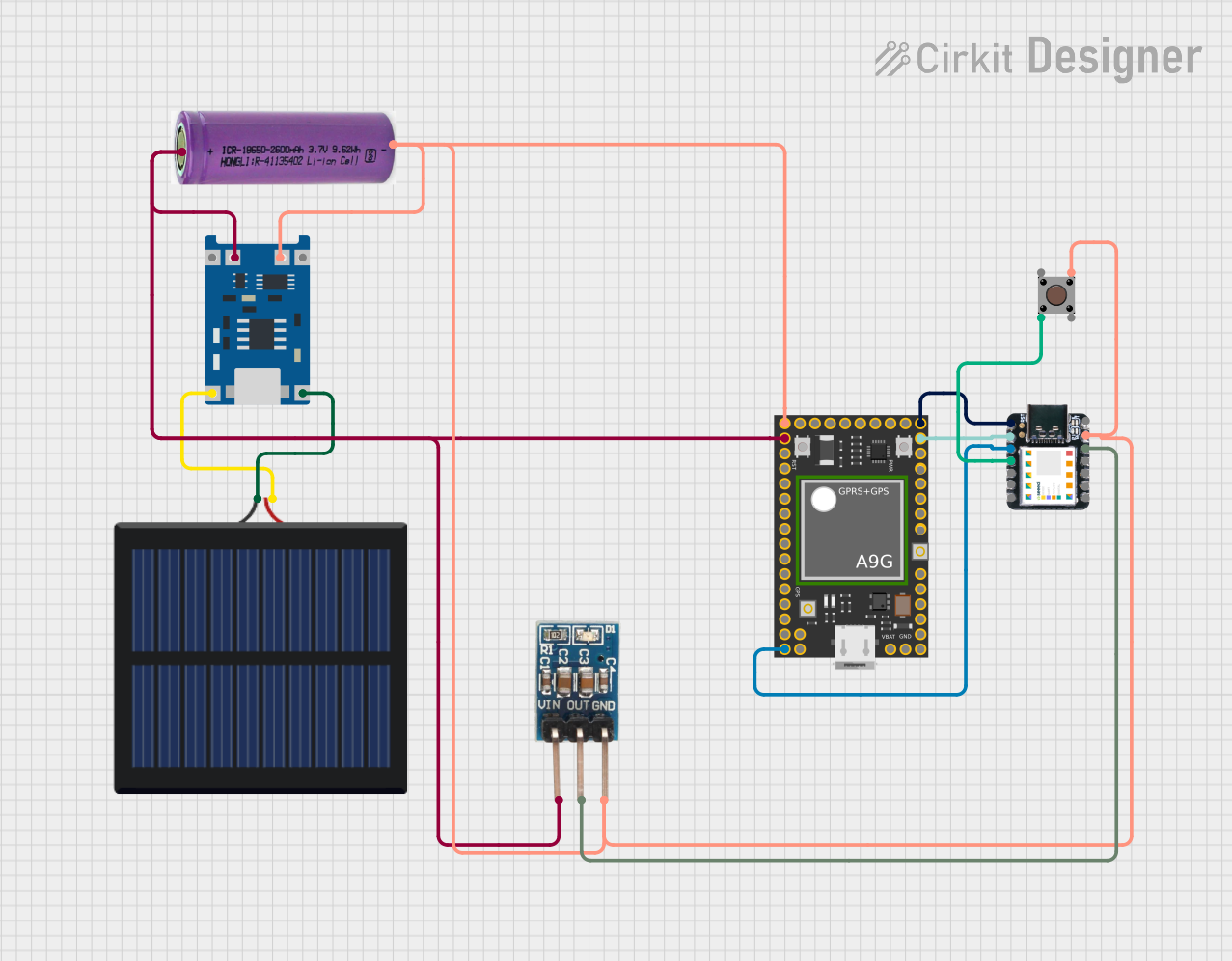
 Open Project in Cirkit Designer
Open Project in Cirkit Designer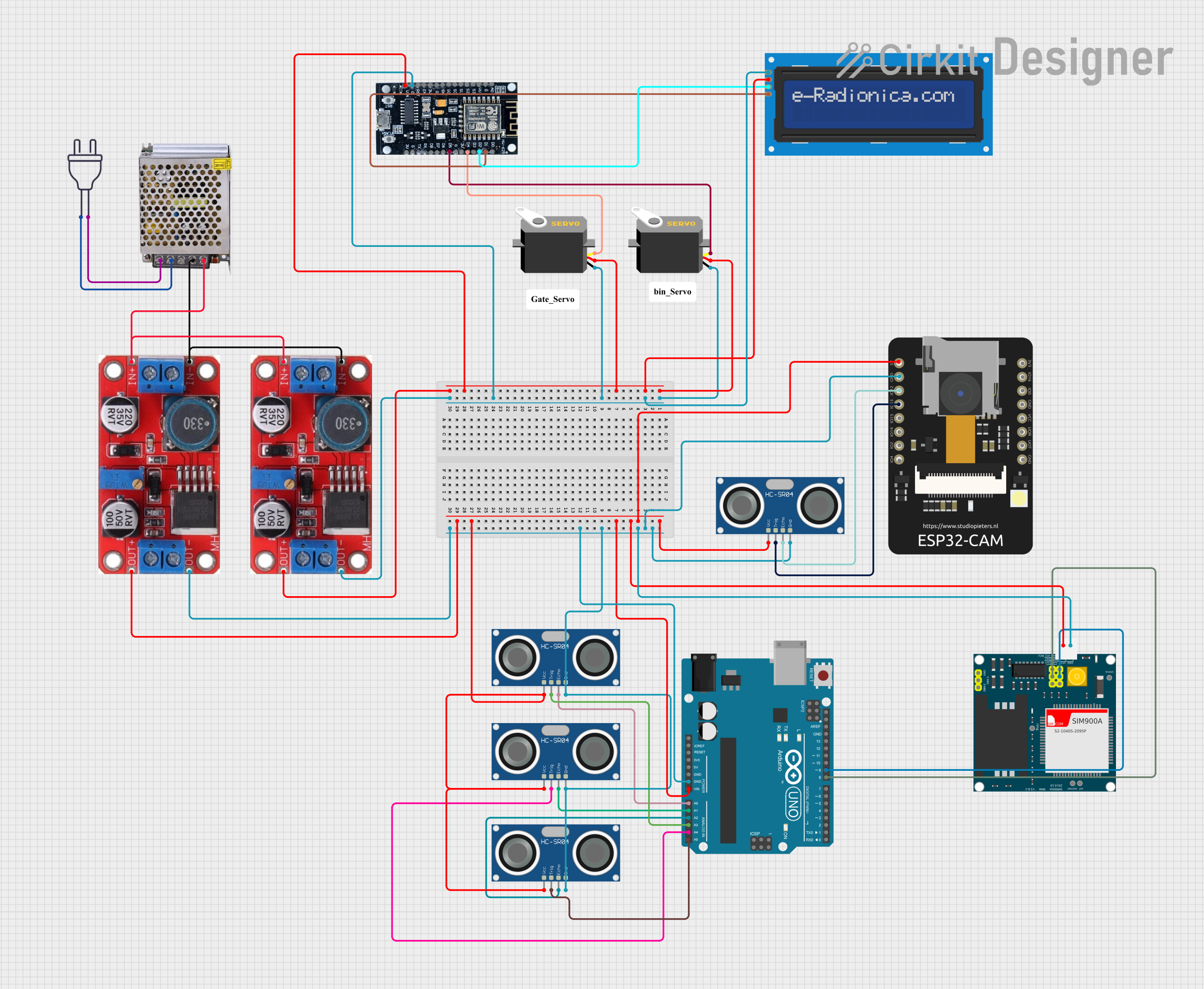
 Open Project in Cirkit Designer
Open Project in Cirkit Designer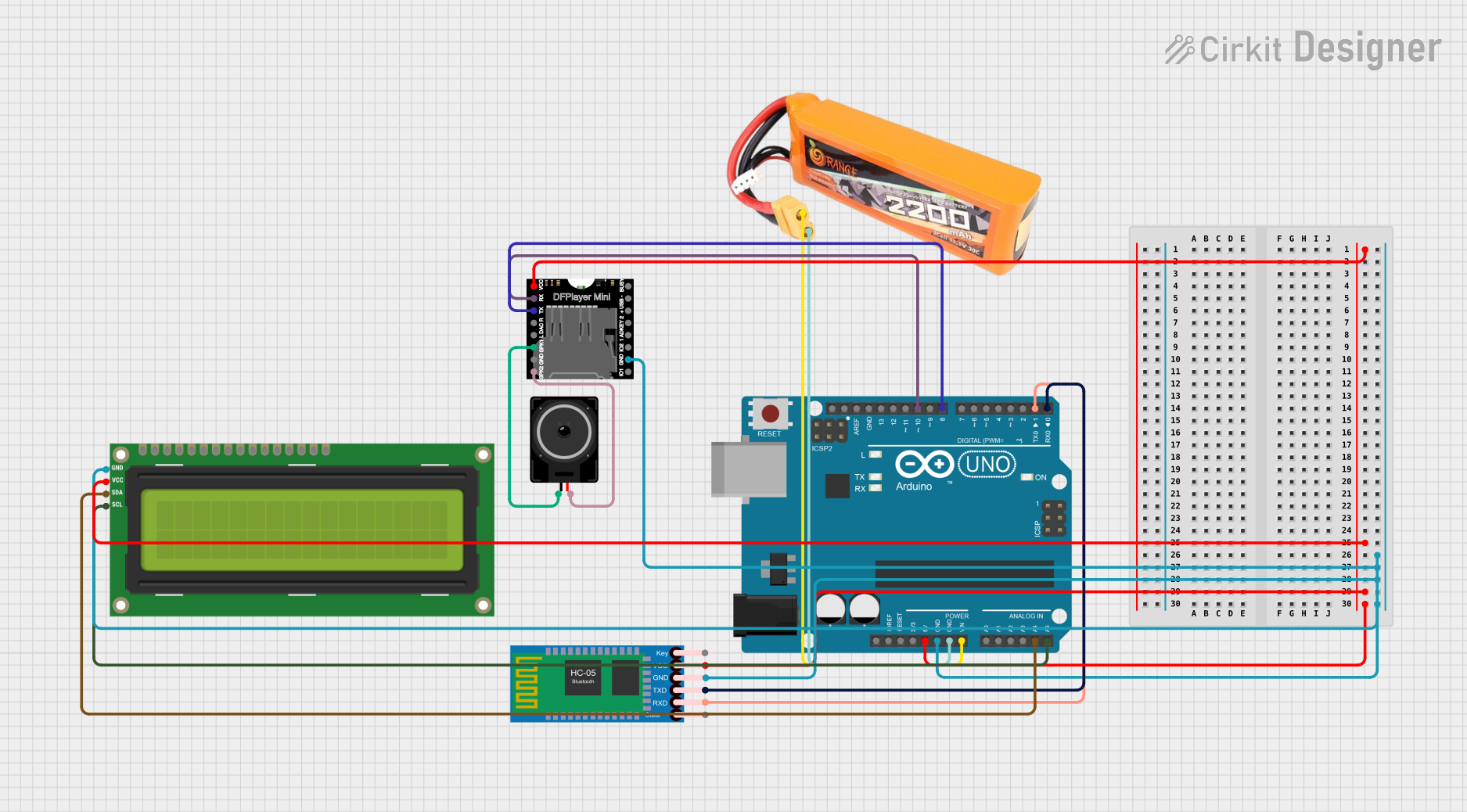
 Open Project in Cirkit Designer
Open Project in Cirkit Designer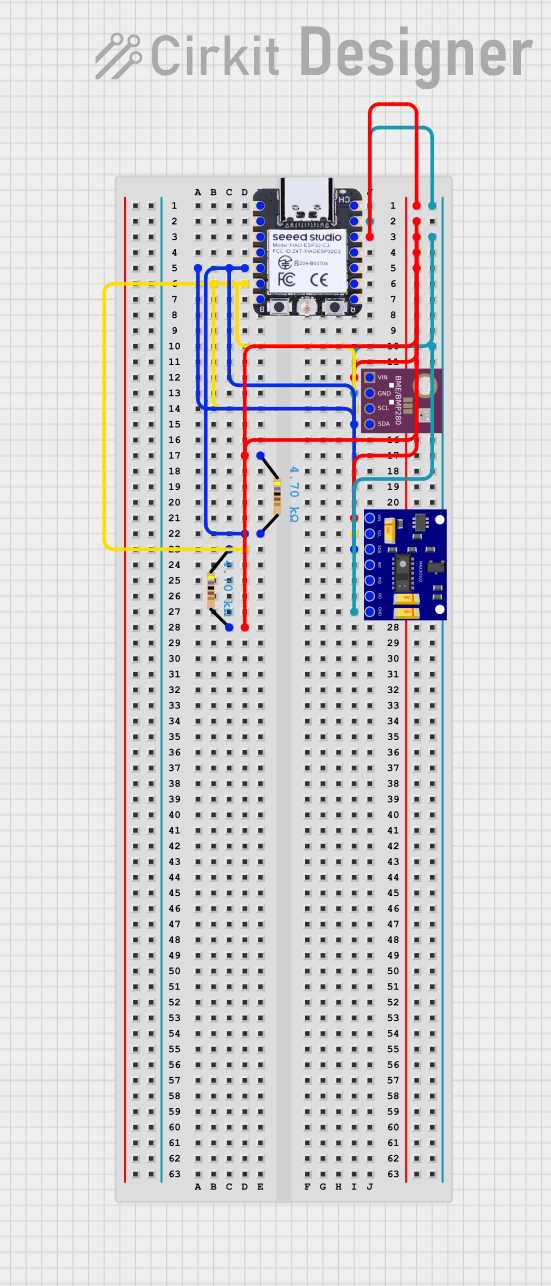
 Open Project in Cirkit Designer
Open Project in Cirkit DesignerExplore Projects Built with Seeeduino XIAO

 Open Project in Cirkit Designer
Open Project in Cirkit Designer
 Open Project in Cirkit Designer
Open Project in Cirkit Designer
 Open Project in Cirkit Designer
Open Project in Cirkit Designer
 Open Project in Cirkit Designer
Open Project in Cirkit DesignerTechnical Specifications
Key Technical Details
- Microcontroller: ATSAMD21G18, 32-bit ARM Cortex M0+
- Operating Voltage: 3.3V
- Input Voltage (recommended): 5V via USB or 4.5-6V via VIN pin
- Digital I/O Pins: 11
- Analog Input Pins: 11, 12-bit ADC channels
- Analog Output Pins: 1, 10-bit DAC
- Flash Memory: 256KB
- SRAM: 32KB
- Clock Speed: 48MHz
- Interfaces: I2C, SPI, UART
- I/O Pin Output Current: 7mA (max)
- USB: Type-C for power and programming
- Dimensions: 20mm x 17.5mm
Pin Configuration and Descriptions
| Pin Number | Function | Description |
|---|---|---|
| 1 | D1/TX | Digital I/O, UART Transmit |
| 2 | D0/RX | Digital I/O, UART Receive |
| 3 | D2 | Digital I/O, Interrupt, PWM |
| 4 | D3 | Digital I/O, Interrupt, PWM, DAC |
| 5 | D4/A6 | Digital I/O, Analog Input |
| 6 | D5/A7 | Digital I/O, Analog Input |
| 7 | D6/A1 | Digital I/O, Analog Input, PWM |
| 8 | D7/A2 | Digital I/O, Analog Input, PWM |
| 9 | D8/A3 | Digital I/O, Analog Input, PWM |
| 10 | D9/A4 | Digital I/O, Analog Input, PWM, I2C SDA |
| 11 | D10/A5 | Digital I/O, Analog Input, PWM, I2C SCL |
| 12 | GND | Ground |
| 13 | RST | Reset pin (active low) |
| 14 | 3.3V | 3.3V power output |
| 15 | 5V | 5V power input/output (depending on USB or VIN power) |
| 16 | VIN | Voltage input for the board |
| 17 | GND | Ground |
| 18 | SWDIO | Serial Wire Debug Data Input/Output |
| 19 | SWCLK | Serial Wire Debug Clock |
| 20 | USB | USB Type-C connector |
Usage Instructions
Integrating Seeeduino XIAO into a Circuit
Powering the Board: You can power the Seeeduino XIAO through the USB Type-C connection or via the VIN pin with a recommended voltage of 4.5-6V.
Programming: The board is programmable with the Arduino IDE. Select "Seeeduino XIAO" from the board manager and use the provided USB cable to upload your sketches.
Connecting I/O Pins: Use the digital and analog pins to connect sensors, actuators, and other components. Ensure that the connected devices are compatible with the 3.3V logic level.
Serial Communication: Utilize pins D0 (RX) and D1 (TX) for UART communication.
I2C/SPI: For I2C communication, use pins D9 (A4/SDA) and D10 (A5/SCL). For SPI, use the appropriate SPI pins as defined in the board's variant files.
Best Practices
- Always ensure that the power supply is within the recommended range to prevent damage.
- When connecting external components, consider the maximum current rating of the I/O pins.
- Use a current limiting resistor when driving LEDs or similar components.
- Avoid applying voltages higher than 3.3V to any I/O pin.
- Disconnect the board from power sources before making or altering connections.
Example Code for Arduino UNO
Here is a simple example of how to blink an LED connected to pin D2 of the Seeeduino XIAO using the Arduino IDE:
// Define the LED pin
const int ledPin = 2;
void setup() {
// Initialize the LED pin as an output
pinMode(ledPin, OUTPUT);
}
void loop() {
// Turn the LED on (HIGH is the voltage level)
digitalWrite(ledPin, HIGH);
// Wait for a second
delay(1000);
// Turn the LED off by making the voltage LOW
digitalWrite(ledPin, LOW);
// Wait for a second
delay(1000);
}
Troubleshooting and FAQs
Common Issues
- Board not recognized: Ensure the USB cable is properly connected and the computer has the necessary drivers installed.
- Sketch not uploading: Check the selected board and port in the Arduino IDE. Press the reset button on the board and try again.
- I/O pin not functioning: Verify that the pin is not being used by another service (e.g., I2C, SPI) and that it is configured correctly in your sketch.
FAQs
Q: Can I power the Seeeduino XIAO with a battery? A: Yes, you can power it with a battery connected to the VIN pin, ensuring the voltage is within the recommended range.
Q: Is the Seeeduino XIAO 5V tolerant? A: No, the I/O pins are not 5V tolerant. Exceeding 3.3V on any I/O pin can damage the board.
Q: How do I reset the Seeeduino XIAO? A: Briefly connect the RST pin to GND or use the reset button on the board.
Q: Can I use the Arduino libraries with the Seeeduino XIAO? A: Most Arduino libraries that do not depend on specific hardware features of other boards should work with the Seeeduino XIAO.
For further assistance, consult the Seeed Technology forums or the community around the Arduino ecosystem.